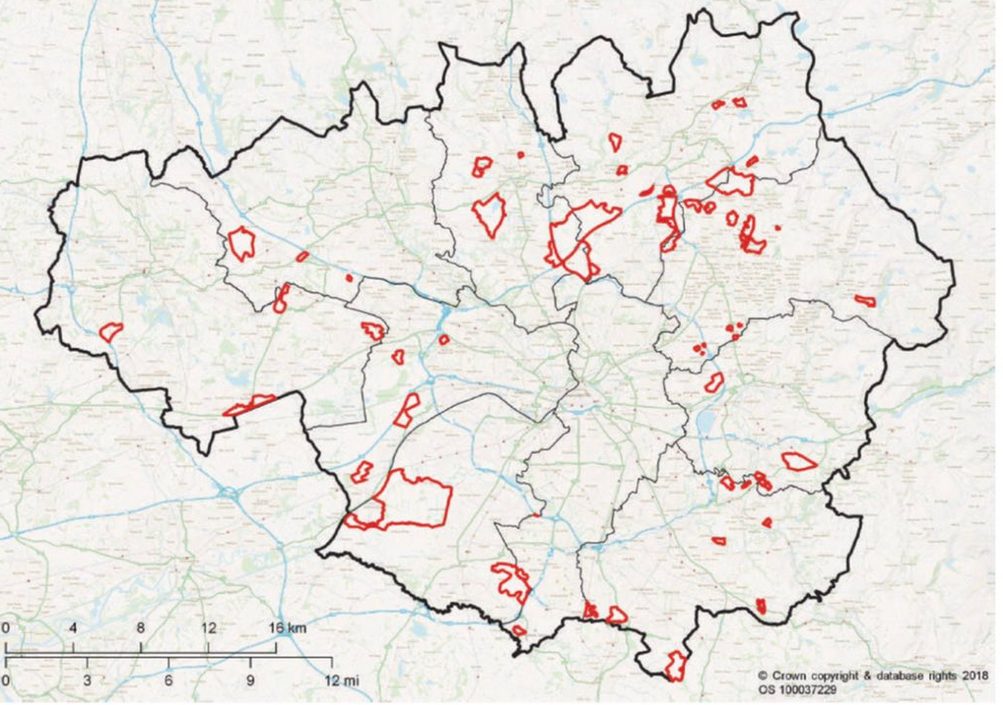And then there were nine: the future of the GMSF
In early December last year, Stockport hammered the nail in the coffin of the latest iteration of the GMSF. And then there were nine.
The remaining Greater Manchester authorities have now agreed, in principle, to work towards a spatial framework with Stockport being invited to fly solo and bring forward its own Local Plan within three years lest it incur the wrath of the Secretary of State.

What does the future hold for the GMSF?
Whatever it is, there seems little doubt that it will be nakedly political and therein lies much of the problem in planning strategically. Political manoeuvring and horse trading have chopped and changed the GMSF, altered housing numbers and substantially reduced the amount of Green Belt release. Indeed, Stockport’s primary concern was that it might lose 1.2% of its existing Green Belt to development.
The Green Belt question speaks to an essential and much broader national debate about this emotionally charged spatial planning tool, its impact on ensuring that development needs are met (or not) and the fact that it is so often misunderstood or mischaracterised. As an aside, I strongly favour a name change from “Green Belt” to the beautifully boring “Urban Containment Zone” to turn down the heat.
There is an interesting contextual point to be made here. Greater Manchester’s land area is roughly the same as Greater London’s yet it contains only 31% of London’s population. Could the reason for this disparity have anything to do with the substantial amount of Green Belt surrounding the City Region and entrenched political resistance to releasing Green Belt land? Very probably. It does not require a huge leap of logic to conclude that unless the remaining authorities make some tough decisions about the Green Belt, there is a likelihood that development needs across the City Region will not be met and the economic potential of this fast-growing area will not be realised.
This challenge is thrown into particularly stark relief when you consider the Government’s rejection of the ‘mutant’ housing algorithm and its redistribution of housing numbers to England’s largest cities will result in Manchester having to find an extra 1,800 odd houses each year.
The timing could not be worse. Despite there being a degree of uncertainty over whether the local and Mayoral elections will take place this May, the GMSF and Green Belt are vote-winning (and -losing) issues. Unless a firm decision about the “Plan of Nine” is made before the elections (whenever they take place) and before the political hue of some Greater Manchester authorities changes, it is extremely difficult to see how any firm stance on a future framework can be settled.
Whatever the nine decide, it must be done quickly because further delay has real world impacts
Many Greater Manchester authorities have development plans that are fairly elderly and some have had the presumption in favour of sustainable development imposed upon them following the recent Housing Delivery Test results. If authorities are to be able to plan the future of their areas effectively and are to avoid ‘planning by appeal’, it is critical that progress is made in the short term on delivering a spatial framework for the City Region.
On the other hand, if the “GMSF Minus One” is not to proceed, planning authorities need to know yesterday. Last year’s Planning White Paper proposed that the Government will take control of plan-making if councils do not have a local plan in place by 2022/23. This sword of Damocles is now hanging menacingly over most Greater Manchester authorities, who (understandably) have pressed pause on plan making in the hope that the GMSF would address the difficult questions.
The glacial pace at which the GMSF has been proceeding has further consequences. By way of illustration, there are currently five North West logistics schemes slowly wending their way through the planning system, having been recovered or called in by the Secretary of State. At least one was a proposed allocation in the GMSF and was strongly supported by the local planning authority, that being Harworth Group’s proposal for 1m sq ft of industrial floorspace in Bolton for whom I appeared as counsel. The financial cost of delaying determination of these proposals has been calculated at an eye-watering £1.4bn. In the midst of an economic and public health crisis from which we must bounce back, further delay in the GMSF risks compromising recovery in the City Region let alone delivering on the Government’s ‘levelling up’ agenda.
The remaining authorities have some difficult choices to make. If there is life yet in a GMSF, should it adhere as closely as possible to the latest version? This may make it easier to go out to consultation on GMSF Minus One sooner, but the consequences of Stockport’s omission need to be traced through. If a GMSF in some form is abandoned, what message does this send to central Government about the ability of the regions to plan for themselves collaboratively? With the debate around devolution gathering pace nationally, a failure by Greater Manchester to collaborate in producing a spatial framework may well dampen No: 10’s devo-enthusiasm.
There is however a powerful case to be made in favour of planning at a strategic level, not the least of which is an ability to focus growth on areas in need of a socio-economic shot in the arm and the ability of individual councils to distance themselves from tough decisions about Green Belt. But there comes a stage where the cost of uncertainty and delay must surely outweigh such arguments. We are likely to reach this tipping point in Greater Manchester very soon unless substantial and meaningful progress is made by the nine in the coming weeks and months.
Jonathan is a top-ranked planning barrister practising in the areas of town and country planning and compulsory purchase, environmental law and highways. He is instructed by Local Authorities, Developers and Private Clients to advise on planning issues and provide representation at planning appeals, Local Plan and CIL examinations and in the Planning Court, Upper Tier Tribunal, Court of Appeal and Supreme Court. He is known to clients as a go to barrister for greenbelt and CIL advice.
Selected industry experts bring you insight and expert advice, across a range of sectors.
Subscribe for free to receive our fortnightly round-up of property tips and expertise
Selected industry experts bring you insight and expert advice, across a range of sectors.
Subscribe for free to receive our fortnightly round-up of property tips and expertise



